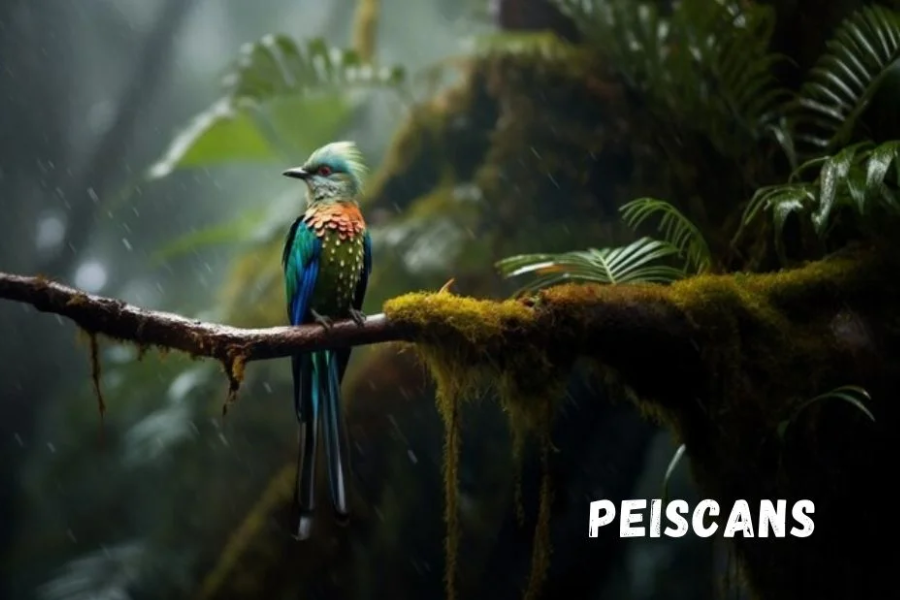Exploring the World of Peiscans: A Comprehensive Guide
Peiscans are captivating creatures that intrigue nature enthusiasts with their distinct traits and behaviors. This article delves into the fascinating world of peiscans, examining their habitat, behavior, diet, reproductive cycle, conservation status, and more. Whether you’re a dedicated researcher or simply curious, this guide will offer valuable insights into the life of these unique animals.
Habitat of Peiscans
Peiscans are predominantly found in coastal areas where they flourish in a range of marine environments. These adaptable creatures thrive in both shallow waters and deeper oceanic zones. They favor regions abundant in vegetation and coral reefs, which offer both shelter and a rich food supply. The presence of peiscans in these environments often indicates a healthy and balanced marine ecosystem. Their habitat choice reflects their dependence on vibrant and diverse marine communities.
Behavior of Peiscans
Peiscans are renowned for their social nature. They frequently form groups that vary in size from small clusters to large schools. This social structure is crucial for their survival, aiding in the search for food and protection against predators. Communication among peiscans is achieved through a series of clicks and whistles. These vocalizations are essential for maintaining group cohesion, coordinating movements, and navigating their surroundings. Their social interactions and communication methods are key components of their behavior and survival strategies.
Diet of Peiscans
The diet of peiscans is diverse and varies according to their habitat. As omnivores, they consume a wide range of marine organisms, including small fish, crustaceans, and plankton. Peiscans have evolved specialized feeding techniques to capture their prey. Some species use their sharp beaks to crack open shells, while others utilize suction to draw in small fish and plankton. This adaptability in feeding strategies highlights their role in the marine food web and their ability to thrive in various environments.
Reproduction of Peiscans
Peiscans exhibit a unique reproductive cycle. Mating typically occurs during specific seasons, and females give birth to live young. The gestation period can vary among species but generally lasts several months. Following birth, the young peiscans are nurtured by their mothers, who provide protection and nourishment until the offspring are capable of independent survival. This maternal care is crucial for the young peiscans’ early development and survival.
Conservation Status of Peiscans
The conservation status of peiscans differs among species, with some facing significant threats. Factors such as habitat destruction, pollution, and overfishing contribute to the endangerment of certain peiscan species. To address these issues, various conservation efforts are underway. Marine protected areas, stricter fishing regulations, and habitat restoration projects are some of the measures being implemented to safeguard these animals and their habitats. These efforts are crucial in ensuring the long-term survival of peiscans and the health of marine ecosystems.
Importance of Peiscans in the Ecosystem
Peiscans play a vital role in maintaining the balance of marine ecosystems. They are integral to the food web, serving both as predators and prey. Their feeding habits help regulate the populations of smaller marine organisms, which in turn supports the health of coral reefs and other marine habitats. Additionally, the presence of peiscans can boost local economies through ecotourism, raising awareness about marine conservation and promoting sustainable practices. Their role in the ecosystem underscores their importance in maintaining marine biodiversity and ecosystem health.
Interesting Facts about Peiscans
Peiscans possess several fascinating adaptations that enhance their survival. They have exceptional vision, allowing them to see clearly both underwater and above the surface. Their streamlined bodies are designed for high-speed swimming, making them efficient hunters and agile in evading predators. Peiscans also have a highly developed sense of hearing, which aids in detecting prey and communicating with other peiscans over long distances. These adaptations contribute to their success as marine animals and highlight their evolutionary prowess.
Human Interaction with Peiscans
Human interaction with peiscans has been varied over time. In some cultures, these animals are revered as symbols of good fortune and prosperity. However, human activities such as fishing, pollution, and habitat destruction pose significant threats to peiscans. Addressing these challenges requires robust conservation programs and public education campaigns to promote coexistence and protect these remarkable animals. Efforts to mitigate the impact of human activities are essential in ensuring the ongoing survival of peiscans.
Future of Peiscans
The future of peiscans hinges on our actions today. Ongoing research and conservation efforts are crucial for understanding and addressing the threats they face. By safeguarding their habitats and adopting sustainable practices, we can help ensure that peiscans continue to thrive in our oceans. Public awareness and involvement in conservation initiatives play a significant role in securing a future for these intriguing creatures. Our commitment to protecting peiscans and their environments is vital for maintaining the health and diversity of marine ecosystems.
Conclusion
Peiscans are remarkable animals with unique adaptations and behaviors that set them apart in the marine world. Their social structures, varied diet, and significant role in the ecosystem underscore their importance. Despite the challenges posed by human activities, ongoing conservation efforts and increased public awareness offer hope for a brighter future for peiscans. By understanding and protecting these fascinating creatures, we contribute to the health and balance of our marine environments.
FAQs
What are peiscans?
Peiscans are marine animals distinguished by their unique adaptations and social behaviors. They inhabit coastal regions and have a diverse diet that includes small fish, crustaceans, and plankton.
Where do peiscans live?
Peiscans are found in various marine environments, from shallow coastal waters to deeper oceanic zones. They prefer areas with abundant vegetation and coral reefs, which provide essential shelter and food sources.
How do peiscans communicate?
Peiscans use a series of clicks and whistles to communicate. These sounds help maintain group cohesion, navigate their surroundings, and locate food.
What is the conservation status of peiscans?
The conservation status of peiscans varies by species. Some are endangered due to habitat destruction, pollution, and overfishing. Conservation efforts, including marine protected areas and stricter fishing regulations, are in place to protect these animals.
How do peiscans reproduce?
Peiscans have a distinctive reproductive cycle with specific mating seasons. Females give birth to live young, which are cared for by their mothers until they can fend for themselves. This maternal care is crucial for the survival of the offspr.
Stay informed with the news and updates on englandtribune




